[ May 26 - June 2, 2004 ]
Cyprus, the Mediterranean's third largest island after Sicily and Sardinia, is well known for its diverse wildlife and high degree of endemism. The island is situated in the north-eastern part of the Mediterranean Sea and is dominated by the Troodos Mountains rising to 1951 metres in Mount Olympos.
A great variety of habitats and natural vegetation can be found in Cyprus. These include forests of hardwood, evergreen and broadleaved trees such as oak, pine, cedar, juniper and maple. Cedrus brevifolia (Figures 1 and 2), Quercus alnifolia (Figures 3 and 4) and Acer obtusifolium are endemic to Cyprus. Where the forest has been destroyed, tall shrub communities or maquis composed of Quercus coccifera, Pistacia terebinthus, Olea europea, Arbutus andrachne and Styrax officinalis have developed. Over most of the island untilled ground bears a grazed covering of garigue, largely composed of low bushes of Pistacia lentiscus, Genista fasselata (Figure 5), Lithospermum hispidulum, Phaganalon rupestre and Cistus creticus (Figure 6). Where grazing is excessive this covering is soon reduced, and an impoverished batha remains, consisting principally of Thymus capitatus, Sarcopoterium spinosum, and a few stunted herbs.
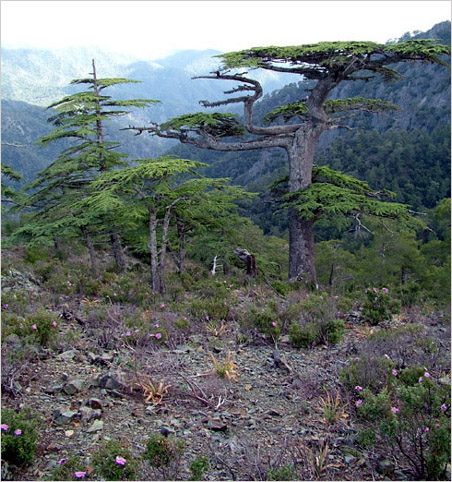 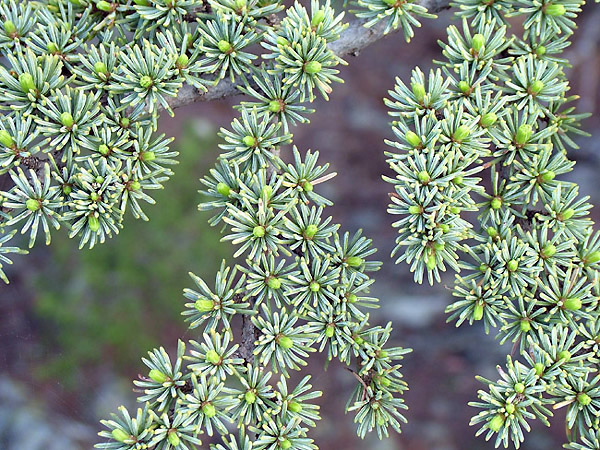
Figures 1 and 2 [Photo © M.Rejzek] Cedrus brevifolia, Koilada ton Kedrou SW Kampos, Troodos Mts. 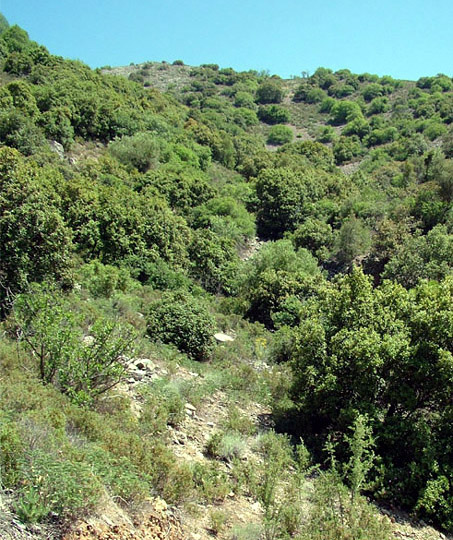 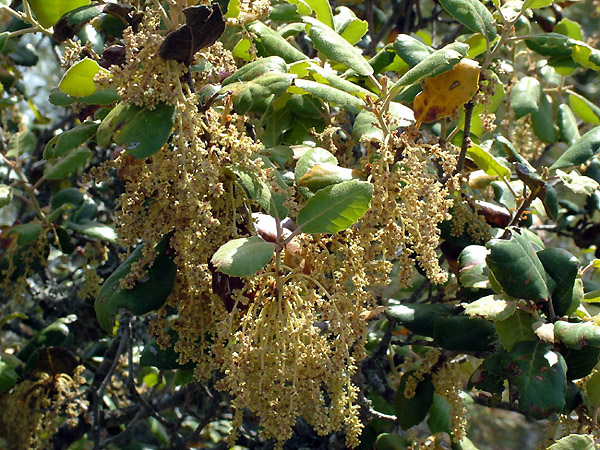
Figures 3 and 4 [Photo © M.Rejzek] Quercus alnifolia, Odou NE Lemesos, Troodos Mts. 
Figure 5 [Photo © M.Rejzek] Genista fasselata, Kato Platres NW Lemesos, Troodos Mts. 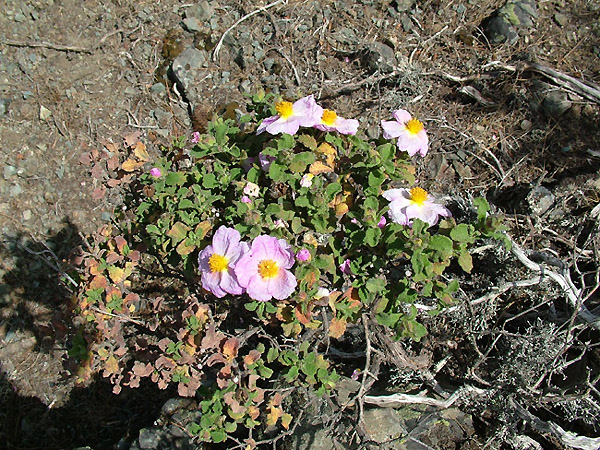
Figure 6 [Photo © M.Rejzek] Cistus creticus, Tripylos Mt. SW Kampos, Troodos Mts. |
The varied natural vegetation is reflected in a great number of associated insects, many of them endemic to the island. Longhorn beetles are represented by approximately 50 species and subspecies out of which 15 are endemic. Beccy and I decided to spend a week on this beautiful island to see some of its natural habitats (and have a holiday in the case of Beccy). Not surprisingly our first trip took us to the the Troodos Mountains, to a place called Koilada ton Kedrou (Figures 7 and 8). In this locality we found an isolated island of Cedrus brevifolia and some of the trees were really impressive. Here, we recorded Axinopalpis barbarae barbarae Sama and Molorchus bassettii (Sama), both endemic to Cyprus.
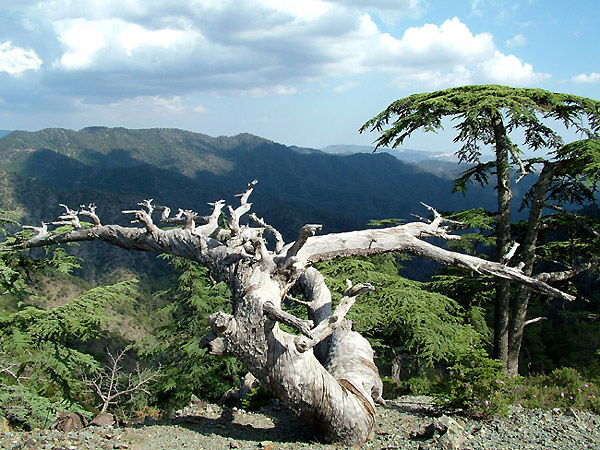
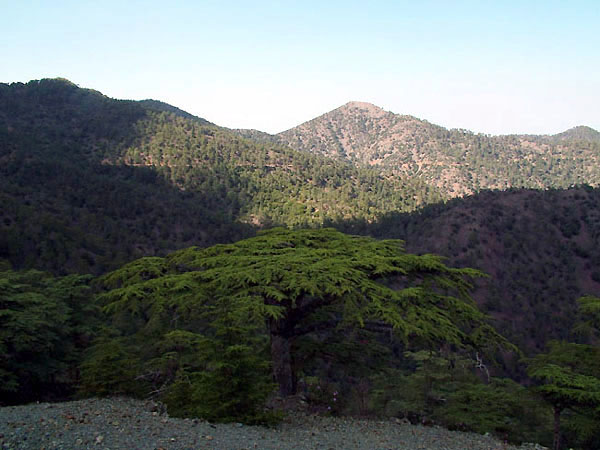
Figures 7 and 8 [Photo © M.Rejzek] Koilada ton Kedrou SW Kampos, Troodos Mts., Cedrus brevifolia |
We then descended to the north-western coast and in places called Loutra tis Afroditis and Pomos we recorded Stenopterus similatus mehli Sama, Axinopalpis barbarae consobrinus Sama, Trichoferus antonioui Sama, Agapanthia (Epoptes) nicosiensis Pic and some less exciting species like Niphona (Niphona) picticornis Mulsant, Nathrius brevipennis (Mulsant, 1839), Phoracantha semipunctata (Fabricius) and Trichoferus fasciculatus fasciculatus (Faldermann). There are some attractive beaches along this part of the coast, often with very few people on them and good for swimming.
Our next trip to the Troodos Mountains took us to the surroundings of Mount Tripylos in Pafos Forest (Figures 9 and 10) characterised by diverse vegetation comprising mainly Cedrus brevifolia, Quercus alnifolia, Acer obtusifolium and Cistus creticus. Apart from the already mentioned Axinopalpis barbarae barbarae and Molorchus bassettii we also recorded Anastrangalia montana (Mulsant et Rey) and quite surprisingly Phymatodes (Phymatodes) testaceus (Linnaeus) as well.
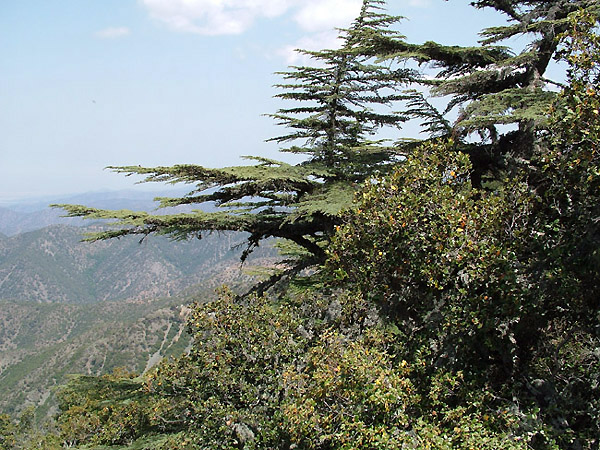
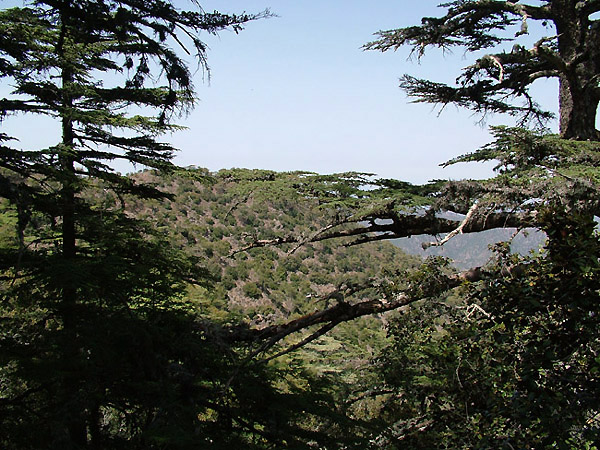
Figures 9 and 10 [Photo © M.Rejzek] Tripylos Mt. SW Kampos, Troodos Mts. |
The following day we decided to head for Mount Olympos. On the way there we passed some interesting places like Kidasi, Kefalos Bridge and Kato Platres in the foothills of the Troodos Mountains where we recorded Agapanthia (Epoptes) nicosiensis Pic, Pedostrangalia (Neosphenalia) raggii Sama and Deilus fugax (Olivier) and also to our surprise we saw Vipera lebetina basking in the sun. Beccy wasn't keen to stop and look at it very closely. When we reached Mount Olympos we headed to the summit through a forest of beautiful Pinus nigra pallasiana (Figures 11 to 13) mixed with Juniperus foetidissima (Figure 14). In this juniper species we soon recorded another endemic to this island Delagrangeus angustissimus troodi Sama.
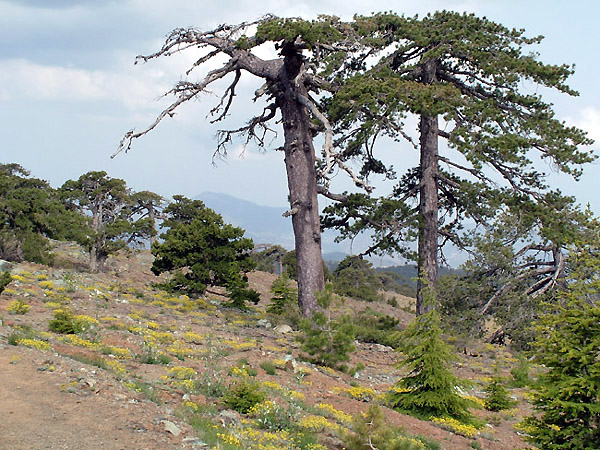
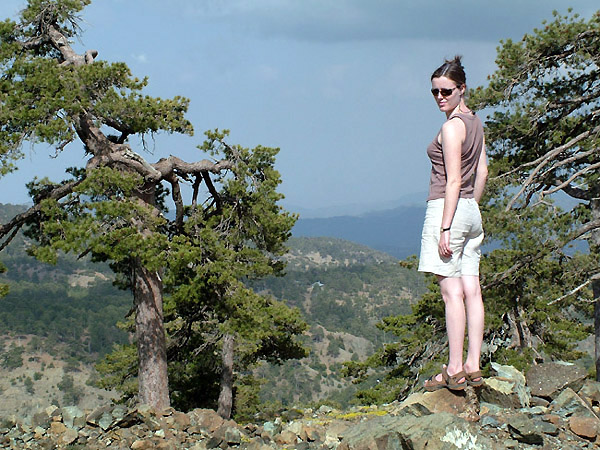

Figures 11 - 13 [Photo © M.Rejzek] Olympos Mt. NW Troodos vill., Troodos Mts., Pinus nigra pallasiana |
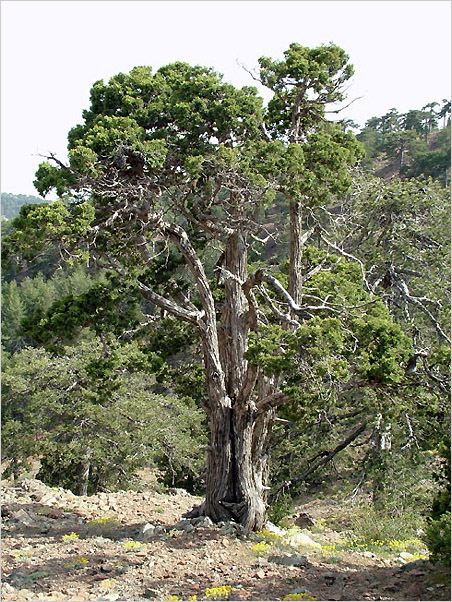
Figure 14 [Photo © M.Rejzek] Olympos Mt. NW Troodos vill., Troodos Mts., Juniperus foetidissima |
Beccy fancied a day on the coast and so we decided to explore the Akamas Peninsula in the west of the island. This is still a wild and relatively untouched part of the island with vast stretches of undeveloped beach and is still a haven for turtles. We stopped at the entrance to the Avgas Gorge (Figure 15) and we spent the day exploring this exciting place. The gorge is extremely narrow in one section, with the walls almost meeting overhead and there is frequently the noise of numerous rooks calling from the trees and rocks. As soon as we entered the gorge we came face to face with a chameleon balancing in the long grass (Figure 16). He looked extremely miserable to be a chameleon and so we gave him a "good bye mate" and went on searching for insects. This place revealed a surprising amount of interesting longhorn beetles comprising Stenopterus similatus mehli, Agapanthia (Epoptes) nicosiensis Pic, Pedostrangalia (Neosphenalia) raggii Sama, Prinobius myardi Mulsant, Icosium tomentosum atticum Ganglbauer, Niphona (Niphona) picticornis Mulsant, Chlorophorus varius damascenus (Chevrolat), Clytus rhamni Germar and Chlorophorus sartor (O.F.Müller). When we descended from the gorge at the end of our interesting day we thought it would be nice to have a refreshing swim. The waves were quite large but Beccy thought it would be fine to swim so we both went in and soon after were washed up on the beach again after being swamped by some enormous waves.
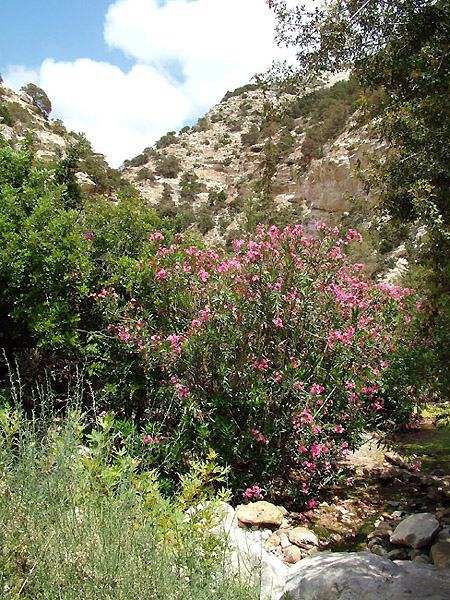 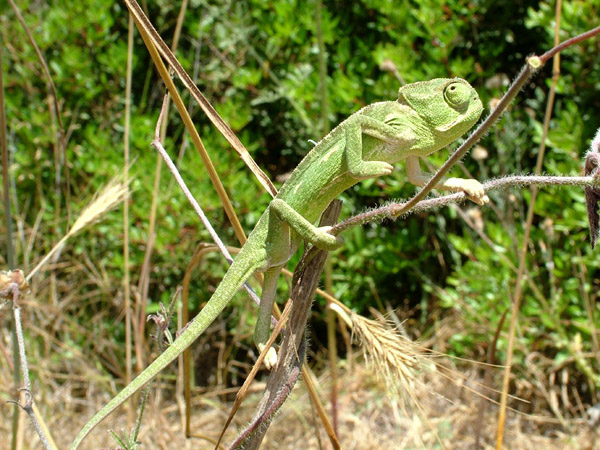
Figures 15 and 16 [Photo © M.Rejzek] Avgas Gorge NW Pafos, Nerium oleander and Chamaeleo chamaeleon |
Luckily we didn't quite drown yesterday so on our last day we visited the surroundings of Odou village located in the Olympos Range of the Troodos Mountains. In the scree slopes (Figure 17) there are nice shrubs of Quercus alnifolia with rich undergrowth formed mainly by Cistus creticus. In this place we recorded one of the most exciting species found in the island Purpuricenus nicocles Schaufuß and also Calchaenesthes primis Özdikmen and the already mentioned Trichoferus antonioui Sama.
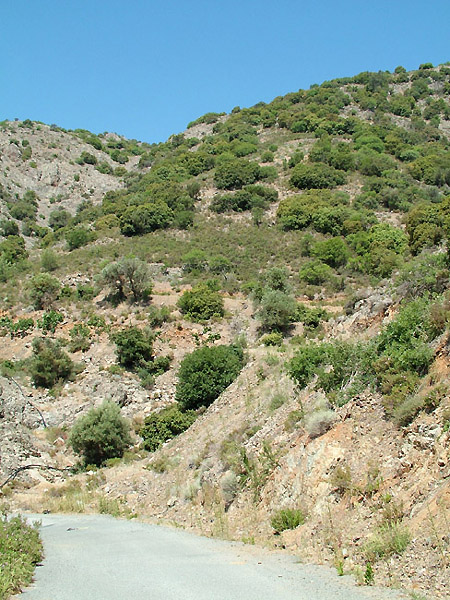
Figure 17 [Photo © M.Rejzek] Odou NE Lemesos, Troodos Mts. |
